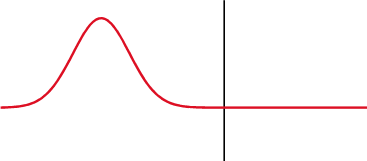1. Introduction to Categorisation of Objects from their Data
What do we see in a satellite image?
"Human Vision" as well as "Computer Vision" both take advantage of the fact that different surfaces absorb, transmit and reflect different wavelengths (colors) of electromagnetic radiation. Different surfaces thus have different absorption, transmission and reflectance characteristics. In remote sensing, the fact that vegetation, soil and water all have different reflection caracteristics (reflection coefficients) in different colors of lights (wavelengths) is used to identify them. In other words, the signal reflected from a surface and detected by a sensor can be related to a specific surface or object.
A white surface, for example, reflects all wavelengths of visible light equally well, whereas a green leaf reflects less radiation in the red and blue parts of the visible spectrum than in the green. This gives an excess of green light (compared to red and blue) and the leaf looks green. So the composition of the electromagnetic reflection, the spectral signature, tells us about the surface emitting or reflecting the radiation.
The human eye can only perceive radiation within a limited range of the electromagnetic spectrum. This part of the spectrum is called the visible range, containing all colours of the rainbow from the red over yellow and green to the blue and violet. There is also radiation beyond the visible range: on the one side there is infrared radiation which you can detect as heat with your skin, on the other side there is the so called ultraviolet radiation. This can not be seen with your eyes, but you can recognize it with your skinby a sunburn, if it was exposed to it.
Instruments for remote sensing are sensitive also outside the visible range, which is an extension of our visual field and gives access to additional information about the physical world surrounding us.
The Reflection Coefficient describes either the amplitude (r) or the intensity (R) of a reflected wave relative to an incident wave.

Source: Oleg Alexandrov / Wikimedia Commons
Rule: The sum of the reflected radiant intensity, of the transmitted, and of the absorbed radiant intensity is equal to the incoming radiant intensity.
If you want to learn more about the physical background of remote sensing please visit the SEOS tutorial Understanding Spectra from the Earth.
